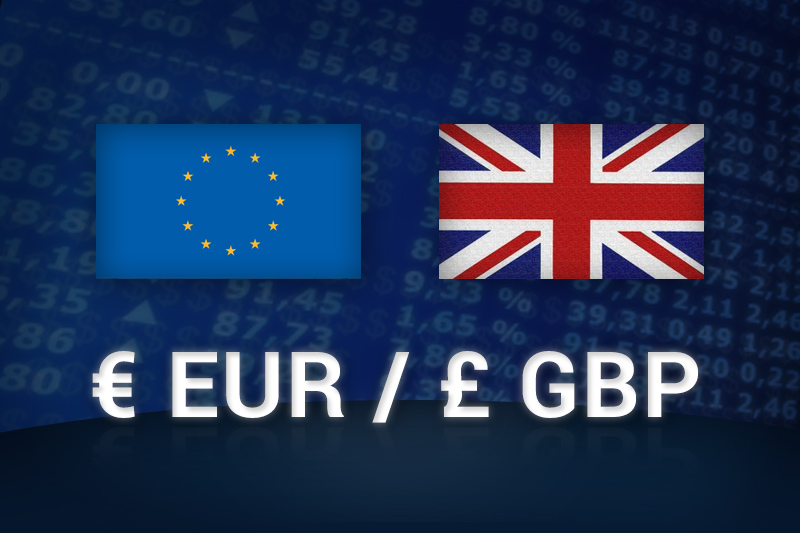Investing.com - The euro fell to a fresh three-and-a-half-year low against the pound on Wednesday, as the single currency was hit by ongoing concerns over the handling of the region’s sovereign debt crisis.
EUR/GBP hit 0.7884 during European morning trade, the session low and the lowest since November 3, 2008; the pair subsequently consolidated at 0.7888, shedding 0.08%.
The pair was expected to find support at 0.7840, the low from November 3, 2008 and resistance at 0.7933, Tuesday’s high.
Sentiment on the euro remained fragile after the German Constitutional Court delayed on Tuesday its decision on whether the euro zone's bailout fund, the European Stability Mechanism, is compatible with German law.
The court said a decision could take months rather than weeks due to the complexity of the ruling. Without German backing, the ESM, which was originally meant to start on July 1, then delayed to July 9, cannot come into effect.
Meanwhile, Spanish Prime Minister Mariano Rajoy announced EUR65 billion of new austerity measures earlier in the day, in an effort to meet new budget-deficit targets agreed with euro zone partners.
However, market analysts warned that the fresh austerity measures were likely to drag Spain’s economy deeper in to a recession.
The fresh budget cuts come a day after the conclusion of the latest meeting of euro zone finance ministers.
While the ministers agreed to grant Spain an extra year through 2014 to reach its deficit reduction targets, they did not come up with a final figure for aid for the country's ailing banks but said some EUR30 billion would be available by the end of this month.
Also Wednesday, Germany saw borrowing costs fall to a record low at an auction of 10-year government bonds, as sustained concerns over the region’s debt crisis continued to boost demand for safe haven bunds.
Meanwhile, Sterling remained supported after data on Tuesday showed that U.K. manufacturing production rose by 1.2% in May, blowing past expectations for a more modest 0.1% gain, after falling by 0.8% in April.
A separate report showed that the U.K.’s goods trade deficit narrowed more-than-expected in May, as exports picked up from the previous month.
Elsewhere, the euro was mildly higher against the U.S. dollar and against the yen, with EUR/USD adding 0.22% to hit 1.2277 and EUR/JPY up 0.05% to 97.35.
Later in the day, the U.S. was to release official data on trade balance and crude oil stockpiles, followed by the minutes of the Fed’s June policy-setting meeting.
EUR/GBP hit 0.7884 during European morning trade, the session low and the lowest since November 3, 2008; the pair subsequently consolidated at 0.7888, shedding 0.08%.
The pair was expected to find support at 0.7840, the low from November 3, 2008 and resistance at 0.7933, Tuesday’s high.
Sentiment on the euro remained fragile after the German Constitutional Court delayed on Tuesday its decision on whether the euro zone's bailout fund, the European Stability Mechanism, is compatible with German law.
The court said a decision could take months rather than weeks due to the complexity of the ruling. Without German backing, the ESM, which was originally meant to start on July 1, then delayed to July 9, cannot come into effect.
Meanwhile, Spanish Prime Minister Mariano Rajoy announced EUR65 billion of new austerity measures earlier in the day, in an effort to meet new budget-deficit targets agreed with euro zone partners.
However, market analysts warned that the fresh austerity measures were likely to drag Spain’s economy deeper in to a recession.
The fresh budget cuts come a day after the conclusion of the latest meeting of euro zone finance ministers.
While the ministers agreed to grant Spain an extra year through 2014 to reach its deficit reduction targets, they did not come up with a final figure for aid for the country's ailing banks but said some EUR30 billion would be available by the end of this month.
Also Wednesday, Germany saw borrowing costs fall to a record low at an auction of 10-year government bonds, as sustained concerns over the region’s debt crisis continued to boost demand for safe haven bunds.
Meanwhile, Sterling remained supported after data on Tuesday showed that U.K. manufacturing production rose by 1.2% in May, blowing past expectations for a more modest 0.1% gain, after falling by 0.8% in April.
A separate report showed that the U.K.’s goods trade deficit narrowed more-than-expected in May, as exports picked up from the previous month.
Elsewhere, the euro was mildly higher against the U.S. dollar and against the yen, with EUR/USD adding 0.22% to hit 1.2277 and EUR/JPY up 0.05% to 97.35.
Later in the day, the U.S. was to release official data on trade balance and crude oil stockpiles, followed by the minutes of the Fed’s June policy-setting meeting.
